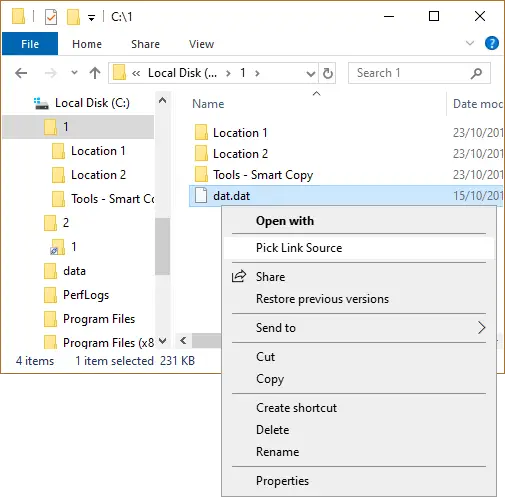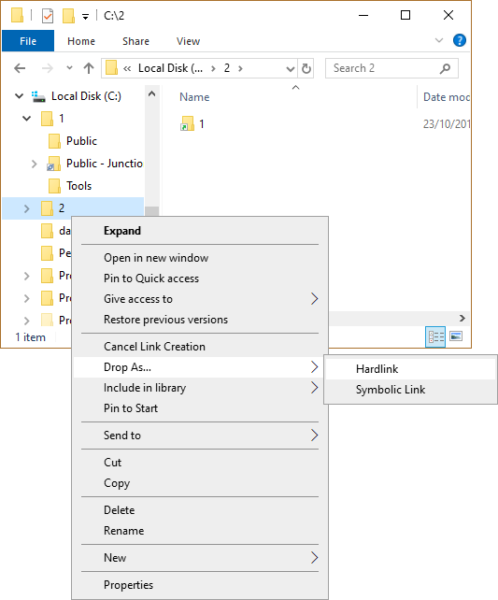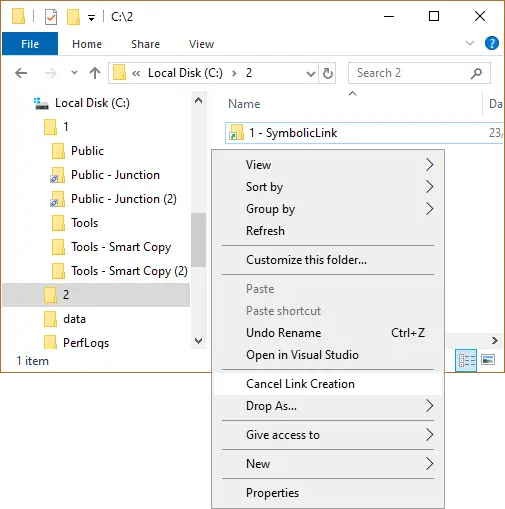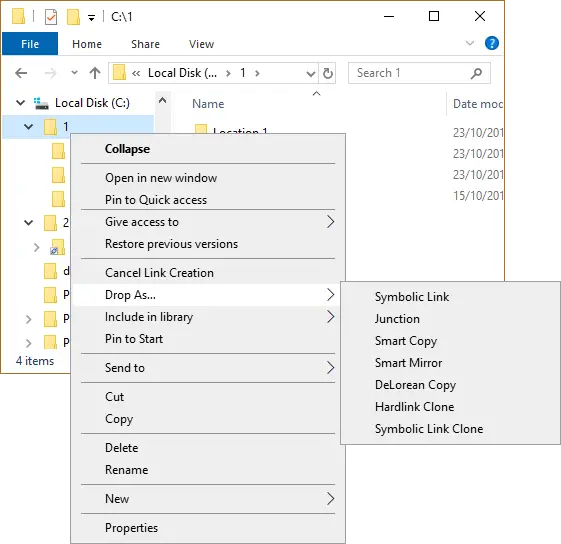If there is one thing, we love without question about Windows 10, then it would without a doubt, be the Windows Shell. However, it’s not perfect, obviously, so how can we make it better for everyday use? Well, to answer that question, we will have to take a close look at HardLink Shell Extension. Using this tool makes it super easy to create Hard Links, Symbolic Links, Junctions and Volume Mountpoints. Just hit the right-click on the mouse button to see all the cool options. From there, select one of the available files, then move on.
What are Hard Links, Symbolic Links, Junctions, Volume Mountpoints?
You might be wondering what is a Hard Link, well, it allows the user to keep a copy of a file, yet have it appear in multiple folders or directories. Creating one requires the use of POSIX (portable open system interface for UNIX) command, which is available in the Windows Resource Kit.
- Symbolic Links also called as Symlinks or Soft link are shortcut files which refer to a physical file or folder located elsewhere. Symlinks act as the virtual files or folders, which can be used to link with individual files or folders, making them appear as if they are stored in the folder with the Symlinks, even though the Symlinks are only pointing to their real location.
- Junctions are, according to the author, wormholes in a tree structure of a directed graph. As it stands, if you make changes to a Junction file, then the original will also experience the same change. The same goes if you hit the delete button, just expect the original to go away as well.
- Volume Mountpoints provides functionality to create complete local volumes onto random disk locations. Volume Mountpoints were not supported in NTFS Version 4.0.
HardLink Shell Extension for Windows PC
The installation is quite simple, but please bear in mind that before going forward, you need to have administrator privileges, or nothing will work out as planned. Now, after executing the installation file, follow the instructions on the screen to complete the task.
The default location for the file after the installation is C:\Program Files\LinkShellExtension. Now, we should point out that while the file is installing, Explorer.exe will restart just once, so don’t get too surprised if your computer screen goes blank for a second or two.
You can improve Windows Shell Explorer right now by the way of Hardlink Shell Explorer. It is a great tool from our point of view, so check out its following features:
- Pick Link Source
- Drop HardLink
- Cancel Pick Link
- Popup Submenu
1] Pick Link Source

OK, so picking the Link Source is a simple thing to accomplish without any problems. Go to the file(s) you want to create a hard link for, then right-click, and select the option that says Pick Link Source. The file should now be stored as the source of the hard link without issues.
2] Drop HardLink

In order to get drop the HardLink, create a destination folder, then right-click within the folder and hover the mouse over Drop As. From there, select Hardlink from the small menu that appears, and that’s it. You can also create a Symbolic Link if that’s your thing because the option is right there.
Also, we should point out that an overlay icon is created for Hardlink files in a bid to distinguish them from regular links.
3] Cancel Pick Link

After picking the link, you may feel the need to cancel before going any further with the task. This can be done by simply right-clicking on the file, and from there, select Cancel Link Creation, and that should get the job done.
4] Popup Submenu

The tool supports Junction, Clones and Symbolic Links, but this can only be done when one or more folders are chosen as Source Links. In a bid to avoid populating the context menu with too many options.
Note that Hardlink Shell Extension supports drag and drop, which can be much easier than the typical copy-paste mechanic in certain situations. You can download Hardlink Shell Extension from the official page.
Leave a Reply